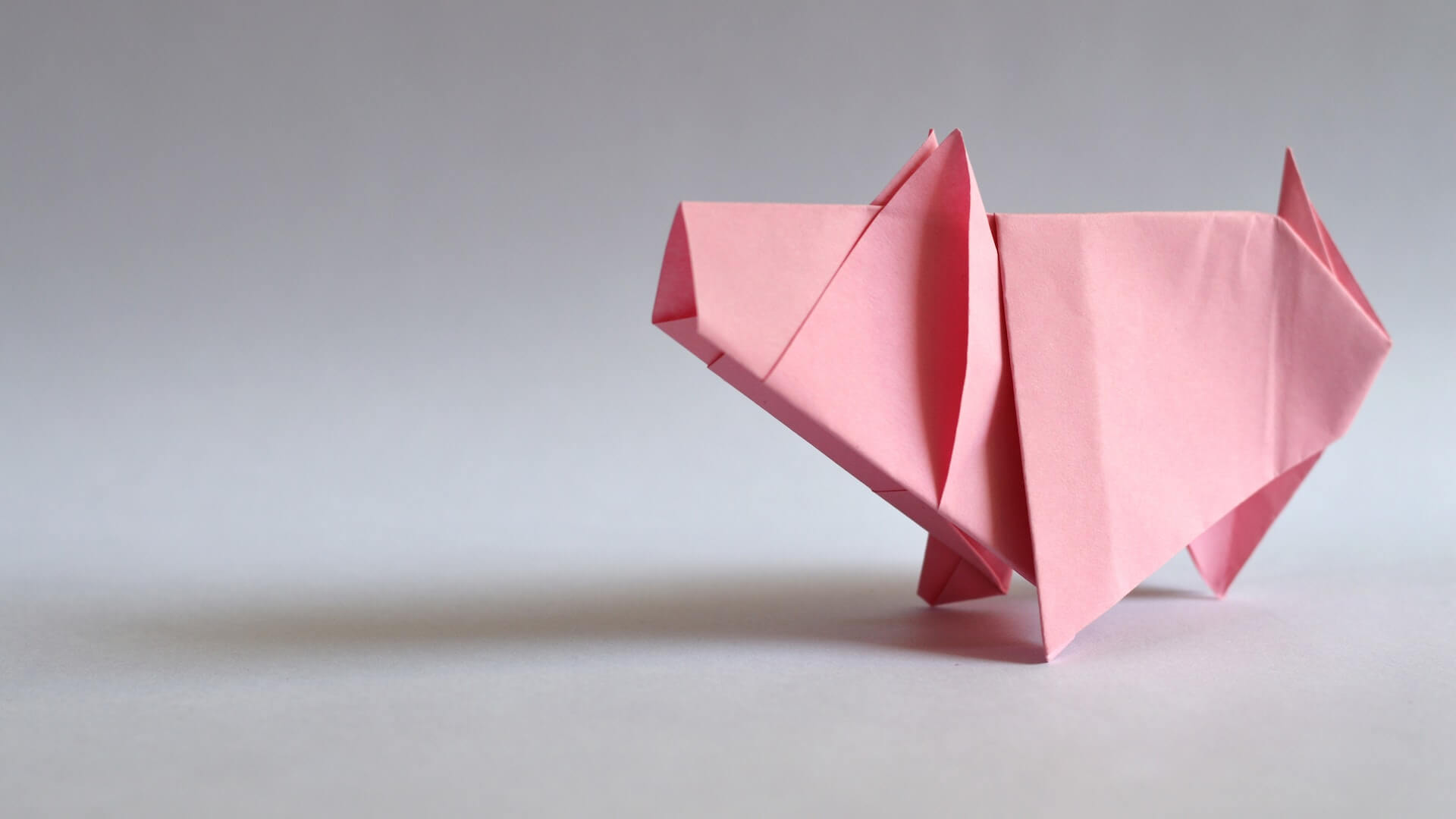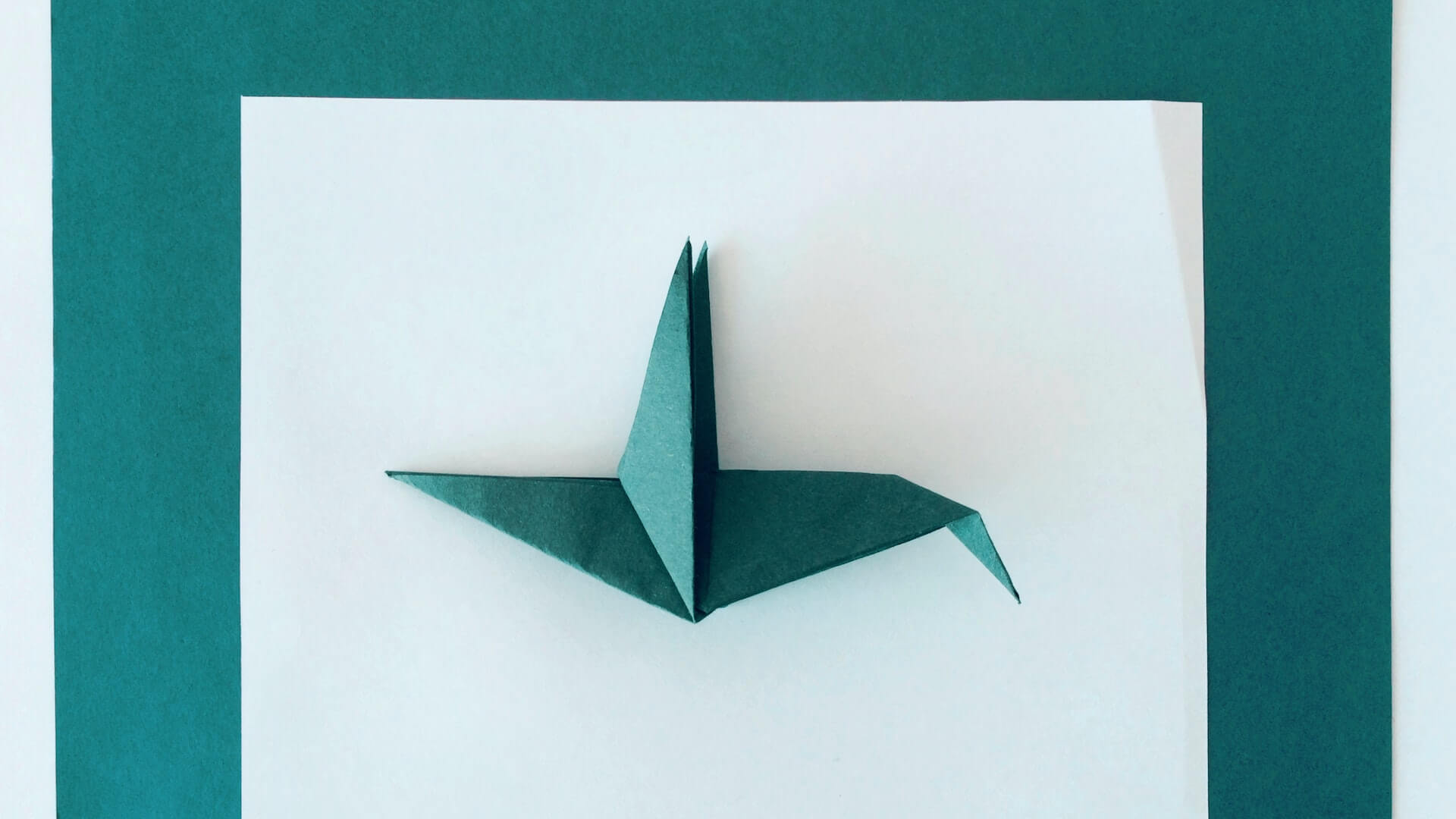Origami is the ancient Japanese art of paper folding. It is a practice that has been passed down for centuries, with roots in both art and mathematics. The word “origami” comes from two Japanese words: “ori,” meaning “to fold,” and “kami,” meaning “paper.” The art of origami has evolved over the years, and today it is a popular hobby enjoyed around the world. Origami can be used to create a wide variety of shapes, from simple animals to intricate designs. It is a meditative practice that requires patience, precision, and creativity. In this post, we will explore the world of origami, looking at its history, its benefits, and the many different ways people use this art form to create beautiful and unique works of art. Whether you’re a seasoned origami artist or a beginner looking to try something new, this post will inspire you to explore the art of origami and unleash your creativity.
The history and origins of origami
Origami, the ancient Japanese art of paper folding, has captivated hearts and minds for centuries. Its origins can be traced back to the 17th century in Japan, although similar paper-folding traditions can be found in other cultures around the world.
The word “origami” itself is derived from two Japanese words: “ori,” meaning folding, and “kami,” meaning paper. The practice of origami goes beyond simple paper folding; it is a form of artistic expression that requires precision, patience, and creativity.
Origami has deep roots in Japanese culture and holds significant symbolism. In the past, it was predominantly used for religious ceremonies and formal occasions. The intricate paper designs were believed to bring good luck, ward off evil spirits, and represent various aspects of nature and spirituality.
The art of origami gradually spread beyond Japan’s borders, gaining popularity across different continents. Ancient trade routes and cultural exchanges allowed for the exchange of ideas and techniques, leading to the evolution of origami styles and designs.
Origami’s influence extended beyond its traditional use, becoming a beloved recreational activity and an educational tool. Its therapeutic benefits, such as enhancing focus and concentration, have made it a popular practice for stress relief and mindfulness.
Today, origami has evolved into a global art form, with artists and enthusiasts pushing the boundaries of creativity. Traditional designs have been reimagined, and new techniques have been developed, allowing for the creation of intricate and awe-inspiring origami sculptures.
Understanding the artistry behind origami
Beyond its intricate folds and delicate shapes, origami is more than just a mere craft; it is an expression of creativity and imagination.

At its core, origami is about transforming a simple sheet of paper into a work of art. It requires a deep understanding of geometric principles, symmetry, and precision. Each fold is carefully calculated, with meticulous attention paid to angles and proportions. The result is a stunning creation that showcases the mastery of the artist’s hands.
The artistry behind origami lies not only in the final product but also in the process itself. Folding a piece of paper requires patience and focus, as each step builds upon the previous one. It is a meditative practice that immerses the creator in a world of tranquility and concentration.
Moreover, origami is a versatile art form that transcends cultural boundaries. Originating in ancient Japan, it has spread throughout the world, influencing artists, designers, and architects across different disciplines. From delicate flowers and intricate animals to complex modular structures, origami offers endless possibilities for artistic expression.
The beauty of origami lies in its simplicity. With just a single sheet of paper and a few folds, one can create something extraordinary. It challenges the artist to push the boundaries of their creativity and explore new possibilities. The art of origami encourages experimentation and innovation, allowing artists to add their unique touch to traditional designs or create entirely new ones.
Benefits of practicing origami for mental well-being
Practicing origami is not only a beautiful and intricate art form but also offers numerous benefits for mental well-being. Engaging in this ancient Japanese paper-folding craft can have a profound impact on your mind, helping you find peace, focus, and relaxation.
One of the primary benefits of practicing origami is its ability to promote mindfulness. As you meticulously fold and crease the paper, your mind becomes fully immersed in the present moment, letting go of any worries or distractions. This meditative quality of origami allows you to cultivate a sense of calm and tranquility, providing a much-needed break from the fast-paced modern world.
Origami also enhances cognitive abilities and improves concentration. The intricate folds and precise measurements required in origami exercises your brain, sharpening your problem-solving skills and spatial awareness. As you follow the steps of a complex origami design, you are compelled to focus on the task at hand, enhancing your ability to concentrate and promoting mental clarity.
Moreover, origami serves as a fantastic stress-reliever. The repetitive, rhythmic motions involved in folding paper can have a soothing effect on the mind, releasing tension and reducing anxiety. This creative outlet allows you to channel your emotions and express yourself artistically, acting as a form of self-care that brings a sense of fulfillment and accomplishment.
The benefits of origami extend beyond the mental realm. Engaging in this art form stimulates fine motor skills and hand-eye coordination, particularly when working with smaller, more intricate designs. This can be particularly beneficial for children or individuals looking to improve their dexterity and precision.
Materials and tools needed for origami
To embark on your own origami journey, it’s important to gather the necessary materials and tools.

1. Paper:
The foundation of any origami project is paper. Traditionally, origami paper, also known as kami, is used. It is a lightweight and square-shaped paper specifically designed for origami. However, you can also use other types of paper like colored or patterned paper, as long as it is easy to fold and holds its shape well.
2. Scissors:
While origami typically involves folding without cutting, having a pair of scissors can be useful for certain projects that require trimming or creating specific shapes. Make sure to use sharp, precise scissors to achieve clean cuts.
3. Ruler:
A ruler comes in handy when you need to measure and create precise folds. It helps ensure accuracy and symmetry in your origami creations, especially for complex designs.
4. Bone Folder:
A bone folder, also known as a creasing tool, is a helpful tool for making crisp and clean folds. It is usually made of bone, but you can also find plastic or metal alternatives. The smooth, rounded edge of a bone folder allows you to press down on the paper without damaging or tearing it.
5. Folding Board or Mat (optional):
Although not essential, a folding board or mat provides a dedicated surface for origami folding. It helps keep your work area organized and protects your table or desk from scratches. Additionally, some folding boards come with pre-marked grids, which can assist in creating precise and uniform folds.
Basic origami techniques and folds
One of the fundamental folds in origami is the valley fold. This fold involves folding the paper towards you along a line, creating a crease that resembles a valley. The valley fold is often used to create sharp angles and precise shapes in origami models.
On the other hand, the mountain fold is the opposite of the valley fold. With the mountain fold, the paper is folded away from you along a line, resulting in a raised or mountain-like crease. This fold is commonly utilized to add dimension and depth to origami designs.
Another essential technique is the squash fold. As the name suggests, this fold involves squashing a portion of the paper to create a flattened surface. The squash fold is frequently employed to transform a simple shape into a more intricate and detailed design element.
The reverse fold is a versatile technique that allows for the manipulation and transformation of origami models. By unfolding a section of the paper and folding it in the opposite direction, the reverse fold can alter the shape and structure of the origami piece, adding complexity and visual interest.
Furthermore, the blintz fold is a technique that involves folding the paper into a smaller square, creating multiple layers and a compact base for more advanced origami designs. This fold is often used as a starting point for creating intricate origami animals or objects.
As you delve deeper into the art of origami, you will encounter a wide array of techniques and folds that will expand your creative possibilities. From the petal fold to the waterbomb base, each fold opens up a new world of possibilities for creating stunning origami masterpieces.
Exploring different types of origami models
From simple and traditional designs to complex and intricate masterpieces, there is no shortage of options when it comes to the types of origami models you can delve into.

One of the most well-known types of origami models is the animal kingdom. From graceful swans to playful monkeys, folding paper into animal shapes allows you to unleash your creativity while also capturing the essence of these creatures through simple folds and precise techniques.
For those seeking a challenge, modular origami is a fascinating type to explore. This involves creating intricate designs by folding multiple units of paper and interlocking them together. The result is a stunning three-dimensional structure that showcases the beauty and complexity of origami.
Origami can also be used to create practical objects. For example, you can fold paper into functional items such as boxes, envelopes, or even a wallet. These models blend the artistry of origami with everyday usability, making them both visually appealing and useful in your daily life.
If you are looking to add a touch of elegance to your origami creations, you can delve into the realm of geometric origami. By folding precise angles and creating intricate patterns, you can create stunning geometric shapes that demonstrate the mathematical beauty inherent in origami.
For those who enjoy a touch of whimsy, there are origami models inspired by fantasy and mythology. From dragons to unicorns, these models allow you to bring mythical creatures to life through the simple act of folding paper. The level of detail and creativity in these models is truly awe-inspiring.
Intermediate and advanced origami techniques
Once you have mastered the basics of origami, you may find yourself eager to explore more intricate and challenging techniques. Intermediate and advanced origami techniques offer a whole new world of possibilities and allow you to create stunning and complex designs that will impress both yourself and others.
One popular intermediate technique is known as “wet-folding.” This technique involves dampening the paper slightly before folding it, which allows for more sculptural and three-dimensional creations. Wet-folding is often used to create lifelike animals, plants, and figures with curved surfaces and intricate details. It requires a delicate touch and patience but results in stunning and realistic origami models.
Another advanced technique is called “modular origami” or “unit origami.” This technique involves folding multiple identical units and then assembling them together to create a larger and more complex structure. Modular origami enables you to build intricate geometric shapes, elaborate polyhedra, and even functional objects like boxes or lamps. It requires precise folding and a good understanding of how the units fit together, but the end result is truly awe-inspiring.
For those looking for a challenge, “origami tessellations” are a perfect choice. Tessellations involve folding a single sheet of paper multiple times and creating repetitive geometric patterns that interlock seamlessly. The process of creating origami tessellations requires a deep understanding of geometry, symmetry, and precise folding techniques. The final pieces can be incredibly intricate and visually stunning, resembling beautiful tiled artworks.
Famous origami artists and their contributions
Throughout history, numerous talented artists have emerged, pushing the boundaries of this intricate craft and leaving their indelible mark on the art of origami.
One such luminary in the world of origami is Akira Yoshizawa. Often regarded as the father of modern origami, Yoshizawa revolutionized the art form by developing the concept of “wet-folding.” This technique involves dampening the paper, allowing for greater flexibility and sculptural possibilities. Yoshizawa’s creations showcased incredible detail and lifelike qualities, elevating origami to new heights.
Another remarkable figure in the realm of origami is Tomoko Fuse. Known for her expertise in modular origami, Fuse has produced awe-inspiring designs composed of multiple folded units that interlock to form intricate geometric shapes. Her dedication to meticulous craftsmanship and geometric precision has earned her recognition as one of the most influential contemporary origami artists.
Satoshi Kamiya is another name that resonates deeply within the origami community. Renowned for his complex and highly detailed models, Kamiya’s creations often push the boundaries of what seems possible with a single sheet of paper. His designs include fantastical creatures, mythical beasts, and intricate insects, showcasing the unlimited potential of origami as a medium for artistic expression.
Additionally, Jun Mitani is celebrated for his fusion of mathematics and origami. As a computer scientist and origami artist, Mitani employs computational algorithms to generate stunning, mathematically-inspired folded forms. His works seamlessly merge art and science, captivating audiences with their elegance and precision.
How origami can be used for decoration and practical purposes?
When it comes to decoration, origami offers endless possibilities. From simple origami flowers placed in a vase to complex origami animals displayed on a shelf, these folded paper masterpieces can instantly transform a dull room into a whimsical and visually appealing environment. Origami mobiles hung from the ceiling can create a captivating focal point, while origami wall art can serve as a unique and eye-catching statement piece.

But the utility of origami goes beyond mere decoration. With a little creativity, origami can be used in practical ways as well. For instance, origami boxes and containers can be used for organizing small items such as paper clips, jewelry, or even spices in the kitchen. Origami bookmarks are not only functional but also add a touch of charm to your favorite book. And who wouldn’t love receiving a beautifully folded origami envelope to hold a heartfelt letter or special gift?
Origami can also be incorporated into events and celebrations. Imagine a wedding adorned with delicate origami cranes or a birthday party with origami decorations customized to fit the theme. The possibilities are endless, and the use of origami adds a unique and personalized touch to any occasion.
Conclusion
Origami is a mesmerizing craft that has captivated people for centuries, and we hope this blog post has inspired you to give it a try. With just a sheet of paper and a bit of patience, you can create intricate and beautiful designs that will amaze both yourself and others. Let your imagination unfold as you embrace the art of origami and discover the endless possibilities it holds. Happy folding!



